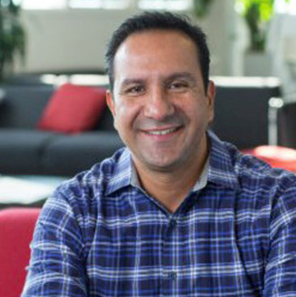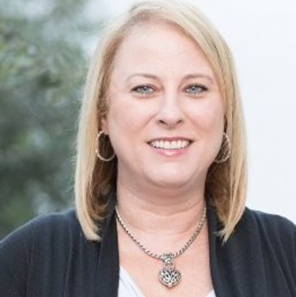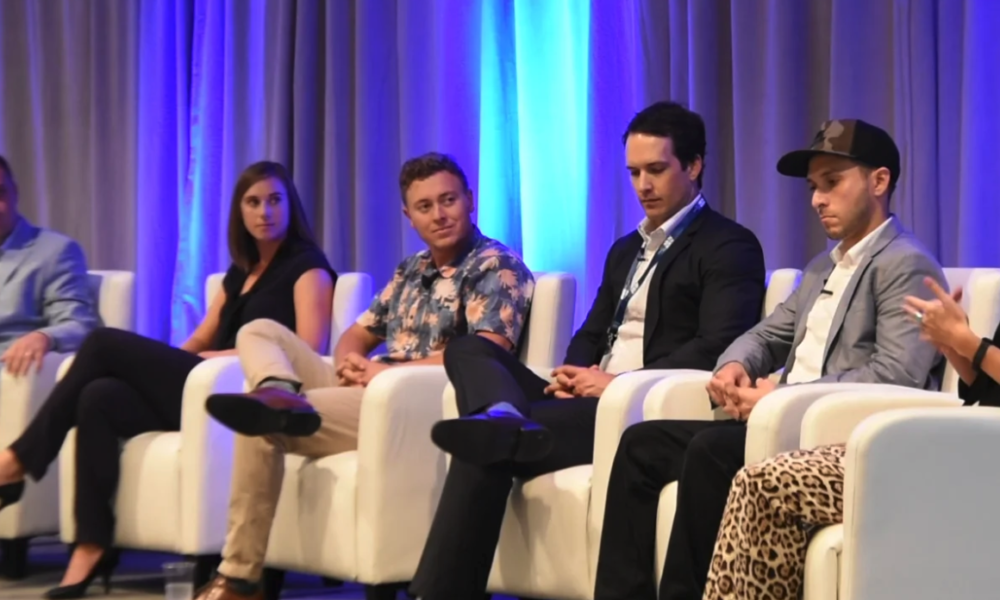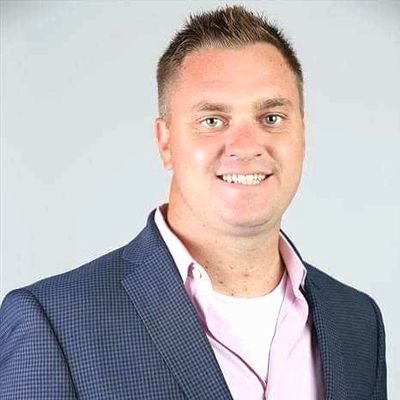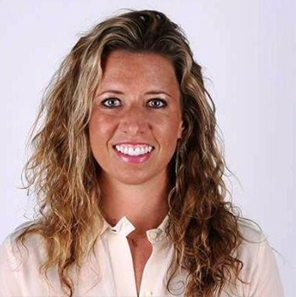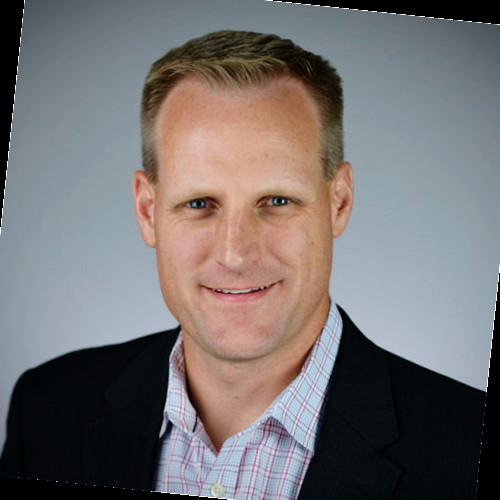Measuring Sales Enablement Success
2.7K Views | 48 Min Read
Edwin Castillo: Alright. Thanks for joining. I think this is a really important topic. A lot of us in sales enablement are always getting questions around is it working, is it not working, when we roll out programs. So understanding how to measure the success of the programs that we roll out is a really key thing, no just to job security obviously, but the organization’s well-being. So, we’ve got a fantastic panel here. I’m going to go down the row. We have Sheryl Buscheck from ServiceTitan. I will let her introduce herself later. Next, we have Kris Hartvigsen from Dooly. DeAnn Haley from CapGroup. Rhett Livengood from Intel. Patrick Aitken from Sojern. Did I miss anybody? Yes. Josie Marshburn from Yext.
No, Chanin is not with us. Oh, there she is. I stand corrected.
Chanin Ballance: I just need a place to sit.
EC: Why don’t you just take mine? Thanks. This is great. And Chanin Ballance from Veelo. So, panelists, if you could, just provide a quick, short blurb about your role in your organization and what you guys are probably most interested in sharing with the group in terms of measuring the success of sales enablement programs. We will start with you, Chanin.
CB: All right. I’m Chanin Ballance – Veelo – I have been working in sales enablement and sales training for almost 20 years. So what I bring to this panel, I think, is the experience of working with hundreds of companies as they’ve tried to figure out their evolution of sales enablement and what they measure. So I look forward to answering questions related to that.
Sheryl Buscheck: Hi, everyone. I’m Sheryl Buscheck. I’ve been in high tech pretty much my whole life. I’m not telling you how long – then you’ll know how old I am. But my background is basically a lot of years in product marketing, transitioning into eight years or so in global sales enablement for various high tech companies. Big, little, I’ve been through the whole gamut. What I wanted to share with you: so, A) I’m a math geek and I love numbers. I have a high-tech background and a technical education, and B) If you can’t tie sales enablement to real productivity metrics in your actual sales results, then you will end up getting written off as an operational expense instead of a business driver. So you have to be able to do that.
EC: Great, thanks.
Kris Hartvigsen: I’m Kris. I’m the founder of Dooly. I’ve been in sales for a long time as well. I ran international sales for my previous company at Vision Critical up in Vancouver, Canada, and learned through that process that there is a wide array of what sales enablement means and how it is deployed based on the different stages of your company and all of that stuff. So I would love to share and impart some of my experiences with you on just how to scale your sales enablement offering to your customer, which is your sales team.
Josie Marshburn: Good morning, everyone. My name is Josie Marshburn. I’m the senior VP of enablement for a software company out of New York by the name of Yext. I have spent my entire career in technology sales and so I bring a very unique perspective to enablement. And for me, measuring success really depends on the program that we are executing, and it is making sure that the program is aligned to the strategy and the measurements are helping to drive that strategy.
Rhett Livengood: Good morning. Hi, I’m Rhett Livengood. I’m with Intel. I manage their sales and enablement programs, and our group is – I work with a lot of start-up groups inside of Intel, and this group reports sometimes into sales, sometimes into marketing, sometimes separately. The one thing I would like to maybe throw out there and leave you with a thought: if you are not growing your sales enablement organization, either through headcount or dollars or funding, you probably have the wrong metrics. So that is one way to know if you have the right metrics or not. Are you growing? If you’re not, you need some new metrics.
DeAnn Haley: Good morning. My name is DeAnn Haley and I am the VP of sales technologies for the Capital Group. Most of you might know us by our mutual funds in your 401K. We are the American Funds fund managers. I have actually spent my entire career in technology supporting sales and marketing, and this last 5 years I moved into more sales-focused sales operations technology function, and so my team today supports all of the technologies that our sales organizations, internal and external, use from a business perspective. We are not an IT team. We have an IT partner.
Patrick Aitken: My name is Patrick Aitken. I’m the director of enablement at Sojern. I am coming at enablement from a different perspective, I think. I work for a product team, which I think is very different than a lot of folks in the room, so my perspective is around supporting go-to-market teams and getting them to understand all the value propositions.
AC: Great. Thank you. So this first question I’m going to direct over to Rhett. You just mentioned that if you’re not growing your sales enablement orientation team and efforts and resources, you are probably measuring the wrong thing. So, in regard to that comment, what are some of the key metrics that you use over at Intel to measure success?
RL: Yeah, I think everybody has their normal operational metrics, so I am not talking about growing your organization through your own operational metrics. I am talking about spending time inserting your group sales enablement efforts in either the corporate marketing function you have or the sales metrics. And to give you an idea, we would measure how much of our sales enablement activities go against deals. We would try to come up with this kind of revenue mixture. When we went back and talked to the sales team, what they really wanted us to measure was how we could pull in their time to sales by a month. That was the key metric, so by tweaking the metric and our focus, we were able to get, again, more resources, more scope, and get pulled out into newer groups.
The same thing for marketing. Rather than measuring pound of digital content or how far you got somebody through the SiriusDecisions model over the funnel, maybe you needed to look at, like the person before me this morning talked about, is really defining some of the personas and choosing certain personas and being very successful with them, and getting some good references for marketing to use as well. So I think by really spending some time with your customers and getting real metrics they care about, it can really help grow your organization in many ways. So, operational metrics – those are for you and your own team – but you really need to spend time connecting with your customer groups whether they are internal or external.
AC: Absolutely. Couldn’t agree more. I think that for those of you that have carried a bag and have sold, you know that you very rarely get a good deal with high value and a short sales cycle if you are working bottoms up in an organization. So I would take that same approach in sales enablement and work with your executive team, or as high of a level team as is vested in the success of the sales organization and revenue growth. Thank you, Rhett.
Patrick, your role is a little bit different in terms of your enablement efforts are mostly around the product and the growth of the product. So focusing on product growth, how do you measure enablement in your organization?
PA: Sure. So I’d say we’re hitting the fundamentals, but we’re hitting the fundamentals really well. So we are tracking training completions. We’re tracking certifications. And then we’ve created a program where we are actually tying that to 5% of variable comp for our reps. So if they don’t complete their training for a quarter or their certification for a quarter, they don’t get 5% of their money. That motivates people. So further down, we do start to look at multi-product sales per region, per manager, per seller, and then we can start to dig in and figure out if there is an issue and we have to go in and do something specific. But that is kind of the fundamentals of what we are doing right now.
AC: Okay. Great. Thank you. There has also been talk and I heard a little bit this morning about leading vs. lagging indicators of success, so I want to direct this question over to Kris. How do you measure leading and how do you differentiate between leading and lagging indicators in success?
KH: Interesting question. So at Dooly, we build real-time sales playbooks that tie into the conversation, and that is going to be something that you would use for a leading indicator. But I want to talk first about the lagging indicators. I think lagging indicators are a lot more important to establish when you are setting up your metrics and your measurement because then you can work back and build your leading indicators on top of that. So your lagging indicators are going to be things like number of reps that are hitting quota or average quota attainment across the team. One thing that has become really clear to me – I’ve had a lot of conversations with a lot of folks in sales enablement over the last few years – is that you really need to pick a north star. That’s the first and foremost thing you need to do is build that north star metric and then work everything back from that.
I really focus on the three E’s of enablement, which are education, empowerment, and then efficacy. And then education and empowerment are going to be your leading indicators. Education, as you were just talking about Patrick, is something that you can measure by completions, number of people that have gone through a program. And then you are going to want to tie that back to velocity in your deals. How much faster are deals happening because people have gone through the courseware? And then empowerment is the same sort of thing. It is going to be around the tools that you are providing to your team so that they can be more successful at the business, and again, you would want to tie that back to performance as your deals are moving through the funnel. And then you can build it back into those lagging indicators.
AC: Great. Thank you. Our next question is around the evolution of sales enablement, and I don’t mean like the evolution of the sales function globally, but sort of within the organization sales enablement is going to evolve because the goals are going to change. So for example, at ServiceTitan, which I know Sheryl has recently joined – I worked with ServiceTitan for about a year-and-a-half about a year ago – and the change was going from a commercial and transactional sale to now an enterprise sale and sort of expanding to the enterprise market and hiring more people. So as the goals of the organizations, maybe even the sales organizations, shift how do you make that adjustment in sales enablement?
SB: In terms of how you get started building and scaling, where we are at now is, I was hired to build and scale sales enablement. I started a couple of months ago. No content management system. No learning management system. All of our training for sales – when they get started and ongoing to date – has been a lot of one-on-one in a room, a really nice, comprehensive curriculum – but you can’t scale when you are doing everything one-on-one. Did they love it? Yes. Is it scalable? No. So, right now, I have to start from we need foundational systems so we can build the programs that make us scalable. So we are going to build out a content management system. Am I going to see sales increase as a result of that? No. But I have to measure adoption of it, and I can give them back selling time because then people aren’t looking for resources, for example, and they’re not building their own stuff, which to me is even scarier. So I’m going to say, you guys get back selling time, I’m going to put everything you need right here, all you’ve got to do is go in and find it. It is all there for you. So can I measure hardcore sales results as a result of that? No. I’m going to measure adoption, but down the line, it should show up.
So, you build out the systems, you get adoption and then you can translate it into: we scale onboarding, they get onboarded faster; I build certification programs that are systems-based in addition to live coaching with managers, people ramp faster. I can measure time-to-quota and make sure people are getting to quota faster. And we can do that across all sales roles very quickly and easily and consistently, so we should have better consistent sales productivity metrics like – if it’s 80% of your team hitting 80% or more of their quota, or it’s 50% hitting quota or beyond, whatever that is. So I am starting with adoption metrics because we are foundationally building, but I am very rapidly moving into actual sales metrics, productivity, and consistency. So that’s kind of how you evolve from building sales enablement into ongoing, tie yourself to sales results at every role level, whether it’s bus dev, sales dev, or as your account executives out there closing deals. You have to have tie-ins to all of those roles.
AC: Great. Thank you. Chanin, similar question. As your sales enablement function evolves, how do your success metrics change?
CB: (inaudible due to mic) quite a few small and medium-sized businesses, in particular, and oftentimes we will meet them at the first stage when they are first building the basics. And part of the challenge is getting some internal consensus because I find early on in establishing sales enablement, people are really reluctant to put out stats and things that they might be measured on and scored on. And so helping to get a little bit of consensus and the alignment between sales and marketing, what is important to measure that will actually go to that north star? I really like that north star concept because it’s a way of uniting you to something else other than your own operational KPIs or vanity metrics even. And so many of the companies we work with will start out with a training side with completion and that’s half the battle, right, getting everybody into that? And then sales readiness. Not only did they complete it but did they have that comprehension level. And then the next level from that in terms of measurement would be correlating that to pipeline, because that’s a leading indicator. Does that training, does that competency and sales readiness capability help them build pipeline faster? And then you can start looking at the lagging indicators of quota achievement. But sometimes that is too long; you don’t have that much time, right? That could be nine months with a sales rep. So that’s the typical progression with companies as they are starting to think about evolving their metrics to be more value-based vs. just operational-based.
AC: Great. Thank you. Next question. I know we talked about this a little bit. Who do you partner with? But I think it’s really important that we really get this right because those are executive sponsors within the organization, but also our collaborators when we start to create content and start to develop measurement for that content. So, this question is for DeAnne. Who do you feel like you need to partner with in the organization, so marketing, HR, ops, to get the ingredients or the data that you need to be successful?
DH: Yeah. And I’m sure the answer for a lot of the companies that are out there could be different. I think a lot of it depends on your structure and who does what, where and when. At the Capital Group, data is really managed and owned by our insights and analytics team, so if there is data outside of systems that you want to marry together in order to produce metrics or numbers that you are providing to your sales organization, you’ve got to partner with them. And what we find at Capital Group is that they’ve got their ideas of what they should merge together and share with the sales organization and the sales side has their ideas, and just figuring out a nice balance and trying to finding a win-win there. They often think that since they are the data experts, we should be leveraging their knowledge. We think we’re the sales experts; they should leverage our knowledge. So it is an interesting dynamic for us but we try to find a good win-win balance there. The other challenge is the typical challenge for us with marketing and sales, and they produce all of our content for us. And similar to the I&A side, they think they’re the experts in what content we need; we think we’re the experts in what content we need. We haven’t found a good balance at Capital Group yet. We are still working through this journey. But I find between sales, marketing, and I&A, those are the most important parts of my organization that we need to come together – partner – to really ensure that we are enabling our sales teams the best that we can.
AC: Great. Thank you.
SB: May I add real quick? It is different at every organization and, interestingly, for ServiceTitan, one of the important things that our team is building now is a bridge across the entire customer acquisition process – so buyer journey and post-sale customer journey – because we are finding that you have to take care of the customer every step of the way. You can’t have sales throwing stuff over the wall to the team that’s deploying solutions. So building partnerships – with marketing? Totally important – joined at the hip with product marketing because we have to work together. We have this many resources to do this much work. So we are building our relationship there too. But we are finding building a bridge between sales and onboarding, so the customer seamlessly gets started, gets our software deployed and gets value out of that software – that’s the way to success for us as a company. Because we’re recurring revenue, you’ve got to get the customer started or you get nothing out of a sale. And by the way, our salespeople don’t get paid until they are deployed and getting value and the company is getting monthly revenue. So for us, it is across the customer success team and the onboarding team too, and then we get referrals and references, then it circles right back into the sales funnel. So sales enablement is a wide and varied role and one of the things I’m trying to do is build all those bridges so we operate like a machine as a whole company, getting the customer to value and value to our whole company by gaining revenue.
AC: Great. Thank you. And I think actually that your comment was a great lead-in to the next question which is, what does this success look like to other stakeholders, such as marketing, sales leadership, HR, and other customer acquisition or go-to-market functions within the organization? So, Marsha, I want to throw that question over to you.
JM: To myself? It’s Josie.
AC: Josie! I’m so sorry. Okay. It wasn’t up there and I wasn’t looking here, so…
JM: It’s okay. It’s okay. I’m sorry. Can you?
AC: I’m sorry. Sheryl commented on the importance of partnering with other stakeholders. So, what does success look like to those other stakeholders in terms of marketing, sales leadership, HR, etc., as you’re looking at your sales enablement programs?
JM: So I work for a fast-growth software company, and for us, everything is about revenue right now. Everything is about growth. And so as a collective group, our executive team looks at turnover across the company and ultimately all of that drives revenue. So for me, it is not just metrics that I am putting together to help the sales leaders understand success and where we have alignment and where we don’t. But I partner with product marketing. I partner with marketing. I partner with HR. I partner with our ops organization. And so as a collective whole, we are always working together on how are we doing, how are we performing. So our metrics on if we look at time to productivity, time to productivity to us is how quickly are you building pipeline, how quickly are you converting those leads to opportunities. And since all of those teams play a role in helping us with content, helping us with metrics, then we all care about that. So it is a team sport, and I think that when you look at metrics, you shouldn’t look at your metrics as success or failure. What our metrics tell us is, as a team, we can do better in certain areas, so let’s work together to do better in those areas.
AC: You know with that as well, I think about your salespeople are also interacting with other groups in the organization, right, and sharing product? And so by getting feedback from those other groups, you sort of get feedback on how sales is interacting internally. And I think that’s really powerful data that you can use in terms of how you coach them and what programs you put together in terms of their internal-facing skills and interactions. So, on that same question about other stakeholders, what does success look like to other stakeholders? Let’s turn that over to Kris, as well.
KH: Yeah. So, one of the stakeholders that I care the most about right now in terms of the ones that are interacting is product marketing/marketing and one of the things that they really, really care about – and it becomes very nebulous once you get past the lead stages – attribution. How am I able to attribute the contribution that I have given you, the case study that I have built you, the sales decks that you have been using, toward the win? And one of the things that we really focus on with them is how can we get that information back to them in a meaningful way that is going to help them understand what work we might be building, how is it performing, how should I alter it. And ultimately another really important thing that they are really going to care about is curation because the story is going to fundamentally change as your product evolves, as your competitors evolve, as your space evolves. So that’s one that we super care about.
Obviously HR – I’m actually blessed with an HR wife so I get to learn a lot about that and she keeps me in line and we have a good little engine going in our household. She would say to me the thing you’re really going to care about from an HR perspective is how we are able to retain talent and build talent and build from within. Obviously, a lot of your best performers are going to be ones that have stayed around with the company and built themselves up with the company. They are going to have so much more intimacy with the story. The last group that I would think that it is important to mention here is customer success, and the thing that customer success is going to care about really is churn. And it is going to be churn based on the good or poor messaging that came out of sales, which is a work (inaudible) to sales enablement and all of the things that you are using to influence the deal. So if you can help them to understand how well you are handing a deal over, what other things have you used during the sales journey to influence the buyer, that’s going to be a great benefit to them so that they can start to work that back into their model.
AC: That’s great.
RL: One quick add on to that.
AC: Good, because you were actually next. So…
RL: So a lot of times for the measurement, you have gone out and, as these experts here have mentioned, you’ve got your different stakeholders and what type of metrics they are looking for. The problem is, and I have done a lot of this with working with partner organizations, they are not able to collect the data to fulfill the measurement. So a lot of times we actually have to put resources into actually obtaining the data so we can get the metrics, so we then can look at the results. Because so much time – you need good data to get good information, right? And so many times, there is either missing data, missing information, the people can’t get it, so something to think about by signing up for the right metric, it might be really hard to get the data. Don’t go down the path where you just measure things that are easy to get because it might be the wrong metric. Sometimes you have to look at your team and say, “I’m maybe going to have to hire some temporary help to actually collect the data because that’s the right thing to do and it will move the organization forward.” So I wanted to make sure as you are doing sales enablement, it’s great with the tools and the online rules and I’ve seen a lot of the vendors out there that are awesome – but it is still a combination of online and manual. There is still a lot of manual going on, so I wanted to make sure that I at least made that comment and had you guys think about that.
JM: You know the other thing I wanted to say on that real quick is ops can be your best friend. It is amazing your sales ops organizations and the metrics that they gather on overall performance across the customer journey. So they are looking at win-losses but they are looking at overall productivity down to a really deep level. So what I do is instead of me having to build a big team to do metrics, I leverage them. They are super good at it. They love to do that with you and partner, and so if you sit down and tell them, these are our goals, this is what we’re aligning to, they will help you with those metrics.
AC: That’s a great point, and just to add to that, if you are in sales enablement and you are a leader in sales enablement and you are not invited to meetings where they look at pipeline conversion and they look at productivity, get yourself there if you don’t already have someone there, like your management. You should be sitting at looking at exactly what’s happening in the pipeline with leads coming in because otherwise, I’m afraid you’re going to be late to the game in terms of trying to figure out how to address issues that could have been addressed weeks ago.
CB: There’s one group that’s been left out, I think, from an alignment standpoint to think about as a sales enablement professional, and that is your CEO, your CFO, because in that boardroom, there are metrics that that board talks about that are in the financial model that you actually influence. So what is the sales cycle, time-to-quota, percentage of quota achievement? Turnover is a common metric that is discussed in a boardroom, and as a sales enablement professional, you influence all of that. So if you can get that visibility into the board at the executive level and that alignment, that is going to make your program even more powerful.
AC: I just learned the other day at a board meeting with a past colleague that they have been calculating their spend based on the average time-to-quota and that was an incorrect number because I heard that the time-to-quota was actually eight months and they were calculating it that they would be ramped in four months. So that inaccuracy goes to the financial model and actually impacts your spending and the company’s spending. So it’s really important.
So we are at the end of the questions that we had prepared, so wanted to open it up to anybody to ask a question of anybody in the audience; or anybody on the panel, I should say. Yes, sir? You have a mic behind you. You have to scream.
Audience member: (inaudible)
JM: So this came up a little bit earlier. But when you are looking at onboarding, you need to look at the metrics that are closest to the event. So if you look at a lagging indicator for onboarding, it is how long it took to close your first deal. And it is a false indicator and the reason it is a false indicator is if your average sales cycle is six months, there is too much that has happened in the six-month period that your onboarding program did not influence. So get it as close to the event as you can. Pipeline build is a great leading indicator. Conversion is a great leading indicator. So that is what I would recommend on false indicators vs. leading indicators.
RL: I would second that. Be careful that you don’t just focus on metrics that are easy to measure. You want to make sure you look at the ones that are most impactful. A lot of times those are the hardest to measure and collect the data. So I think a lot of times where we would get – I call it the big flashlight and the small flashlight – sometimes you need to find a bigger flashlight whether it’s operations or you hire some temporary help to shine that bright light in dark spaces so that you can get the information. It is going to vary whether it’s sales or operations or marketing, whoever you are connecting into with your sales enablement program. But you really want to make sure as the organization progresses and shifts, you are having a good mix of leading and lagging indicators. Make sure you don’t just focus on one or the other because it is really easy to get what I call “comfortable”.
SB: The other important thing is the numerical metrics, but qualitative data matters, too. So don’t just rely on the numbers. Get active in the field and talk to people. Talk to some of your best performers, but also talk to some people that are struggling, find the distinction between what the best performers are doing and the people that are struggling are doing, and try to marry up some trends. Like, are best performers using assets like these? So if you can do that, then you can try to say, “how can I systematize or make a methodology of what my best performers are doing?” Qualitative data matters just as much as the numbers, so don’t ignore conversations with your field people.
CB: I think that’s a great point, especially in the early years, because your data may be a little dirty, right? The integrity might not be there. You don’t have a reliable baseline established. It takes time. And don’t take the numbers for granted, especially if you are measuring a lot of things. I’d encourage you to measure fewer items, actually – the ones that are more meaningful. And always check it with the qualitative.
KH: I would say that don’t boil the ocean with too many measurements early on, particularly when your sales enablement crew is just evolving and building. You are going to be working in a very random world with lots of different things you are going to be experimenting with. You don’t know what will work. It is important to keep an eye on it, but I wouldn’t over-measure. And then as you become more razor-focused and your team builds and your practice evolves, you are going to be able to be very specific in some of those things that you can measure. To your point, I would suggest putting in an SNPS, Sales Net Promoter Score, on your performance of what you are doing and get other people in the business to give you empirical feedback. You can get a lot of objective feedback by basically cookie-ing your content, but you can’t get that real-world feedback that if you just put out an SNPS to your sales team, to your customer success team, and so on, how well you are performing and how you are perceived. Ultimately, you want to have good optics for the business, for the brand that you are building for your sales enablement team. That’s a great way of measuring it
AC: Great point. I love the Net Promoter Score because you can run your own survey with the sales team and not have to wait for a general company-wide survey to go out.
Yes, sir.
Audience member: (inaudible)
CB: Data silos are a big issue. Yeah. And it’s not as expensive as you think. I know it’s probably really confusing because there are so many tools out there that say that they do everything, but you are already measuring and you just put in some of the basic technologies, it sounds like?
SB: We’re putting them in now. Yeah, so your Salesforce data – you’ve got to shore that up. Because you’re right – if the Salesforce data is dirty, it does nobody any good. But, guess what? Your VP of sales needs it clean too just to measure how the team is doing in building pipeline and in taking opportunities stage-to-stage.
CB: And you need his or her support to keep it clean too.
SB: And they have to have that visibility, so the sales ops team should be completely concerned about what’s in the system and you have to drive real data from your sales team via the EVP of worldwide sales. They have to tell them it’s got to be clean or your pay gets affected, basically. It can’t come from us. It’s got to come from their boss.
KH: We obsess over two things. We obsess over the quality of the data and the volume of the data, right? Because a lot of the data you think you have, you don’t have. It is sitting on a post-it note. It is sitting in a Word document and whatnot, so you probably have 12% of what you think you have. So for me, that’s like what keeps me up at night, both in my business and for my customers. But it leads to another really important side of this, which is that all of the stuff you are creating – you have to curate. You have to curate. And you have to be really, really fastidious about that. If you let that slip, you will end up with ancient content that’s sitting in somebody’s desktop folder for a Major League Baseball case study that was built three years ago that is completely irrelevant because the competitor doesn’t even exist anymore. That’s the kind of stuff that’s really, really, really important and you can subjectively measure that as well, again, almost like having an NPSC on your content.
JM: The other point I’ll make on that is one size does not fit all. You really have to tailor your content to your audience. So if you think of somebody young in their career vs. somebody that has been in their role for ten years, the learning levels are extremely different. And if you are building a one-size-fits-all, you are missing the mark probably on both sides. So take the time to align to role type, to the specific role, to the segment that they are in. So I think that’s one really key point. The other key point on it is when you are creating your content, there are a lot of partners you have in the company that can help you. It is not just you. So we used to create – we do create a sales playbook that is 96 slides long. There is no salesperson alive that’s going to read through 96 slides, I promise. I promise. But product marketing thinks that’s a great deck and, you know what, there is great information in that deck. What we did is we partnered with them and we created a battle card and we gave them the definition of a battle card. The battle card is one page – two-sided, one page, 8-½ x 11 – that is a battle card. Key messaging that you can sit down and have a value conversation with a customer. Version one was four slides, four pages long. We kept working with them. Version two – 11×14. Version three – we finally get a home run – 8-½ x 11. So that’s a great way to do it and to partner with people.
RL: One more thing. The best way to clean up your data is to get the right joint metrics that focus on the missing data. That will fix a lot of the data problems. That is my hint for you.
KH: I read a really interesting stat the other day, which is that 87% of that which you teach in the first 90 days is forgotten. So think about that when you are building your content strategy as well and your deployment strategy. You have to – we used to call it data snacking at my last company, the idea of just dripping content in over time.
AC: Any other questions? Yes, ma’am.
Audience member: Are there any specific metrics that you recommend for measuring competency and adoption?
SB: So competency models is where my team has been focused for basically the last three weeks. We have been building competency models and skills and understanding as the foundation for A) How we hire, and B) how we are going to enable people to move up in their skill levels. Measuring competencies takes time and work and it is not something where you can write a quiz and have them answer multiple choice questions. So if you are going to go competency model, really think about how you test for those competencies. If you want people to do a great demo, you have to have them be able to stand up and give a quick, like, 10-minute, out of the demo segment. Or have them stand up and prove they can deliver a demo for real, and you have to have coaching associated with that and you have to have an investment from your sales managers and from your enablement team in effective coaching so that they will get better and better and better at that skill. So certification programs and coaching programs matter a lot, and you do have to think through how you test for each competency, especially if you are using it as a baseline for hiring. Sometimes you can’t just ask somebody, “are you a great presenter?” You make them stand up in front of the room and present for ten minutes on anything they want, and then you know, should I hire them because I need great presentation skills for my account executives. It is hard but it is super important.
CB: And if you are going to go down that route, sometimes your HR team can be a great ally because they can help you develop job ladders that are aligned to competencies, so what’s your AE, what’s your senior AE, what’s your strategic AE. And maybe problem-solving and being able to articulate value is somehow defined as one of the competencies, but there are different levels of capability that can be associated with each of those levels. That will help you then design your training and your certification because you work backward from a learning objective. The learning objective that demonstrates that competency achieved is x, and how I am going to test my rep is maybe some quizzing, but also role modeling, video coaching. There are a number of tools on the market that help you scale that practical practice they need to actually evolve and achieve that next level of competency.
SB: And it helps you build your career pathing too. Career pathing for retention. Sorry, go ahead.
RL: Yeah, the one thing is when you shine the light in that place, be ready for you’re trying to find the perfect fisher-people, but you are going to find there are issues with the bait and there are issues with the fishing pole. So, be ready for that when you open that door.
AC: We have time for one more last, quick question.
Audience member: Andy Jetnick with Client Point. Kris, you mentioned earlier about attribution, which I think is a really important one. What mediums in marketing materials sell the best – what are you seeing are the types of marketing materials that really help get more close rates, reduce the sales cycle? What are the kinds of things that are working right now with respective companies?
KH: Yeah. I have a pretty good lens into this, actually, through what we do. Tribal knowledge is one of the best ways you can sell, right? So the more you can sell through the lens of your customer, the more you can sell through the lens of their peers in the industry the better. So we see the highest performing digestible components you can bring into a sales call or a sales conversation being things like, “oh, it’s interesting that you mention that because at Intel, blah, blah, blah.” I would say that one of the things we are really focused on right now, and I think that anybody in marketing would be really keen on this as well, is you have these massive case studies that you are building. If you are going to build the massive case study, you need to tell people what the digestible bits are in that case study as well, because nobody is going to get on a call with a customer and go, “well, just let me read you the Intel case study right now.” Here are the four really important talking points that we have taken out of that. And then follow it on with the case study that you send to the customer afterward to see if you can create validation in that after reaching out in that way.
RL: You know, it’s interesting. We measured this – I still like references back to your point. It’s one of the key things for the marketing things, but we did a measurement – no one will actually watch a video longer than 90 seconds no matter what the content is. I don’t know if you guys have tested this. We actually tested it. We had people with eyeballs, people drop off. 90 seconds is as long – I would say it’s even shorter now. So you need to be able to take technical information, product information, whatever it is, and get it down to digestible bits as quickly as you can, even if that’s a quick block. But keep it short, short, short.
KH: Yeah.
JM: Yeah. Less is more.
CB: So we differentiate between the case study and the success story and we do it in mentor audit and content audit and gap analysis for onboarding customers. Success stories are missing so many times from the content repository and based on our research and surveying salespeople, that is the number one asset they want. Not just the case study because they don’t want to read the case study. They want the sound bites, the talking points. How does the top selling rep describe that win, the proof points that they can then repeat and use in a real selling conversation? So if you do not have that in your content library, that is probably your most valuable asset to develop.
KH: And it builds on something really important, which is you’ve got to partner with customer success because almost all of your amazing case studies, RLI studies, they are all coming out of customer success. For me, I was a lifelong sales and then I started running a company and I’m hearing all these stories from customers, and I’m going, ”oh my god, I would love to have had this when I was selling.” It just changes the game for you to have that stuff, so really, really link in with them.
DH: One last thing just to jump in on that, the technology that is available today to enable you to find out what is working – it is phenomenal. You know, what is available, what other people like me are using and finding success with – all of that. So, I think right now we are in a great technology era where there are so many options for us to be able to figure that out and get it down to the bite-sized wins that are really going to work for your particular industry.
JM: You know, so, win stories are super, super important. But I think also the really important asset people forget about are the loss stories. Learning from what we try that doesn’t work. And so it is not just about recognizing the wins but document the losses, or the lessons learned, and share those with your team. I think you’ll find great value in them.
